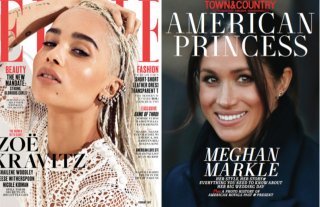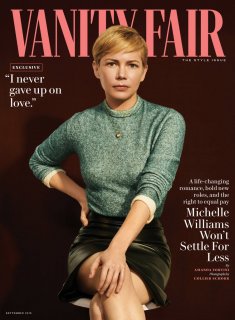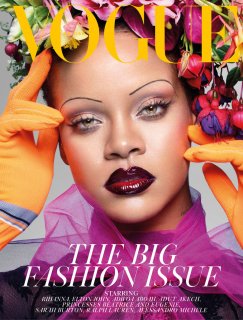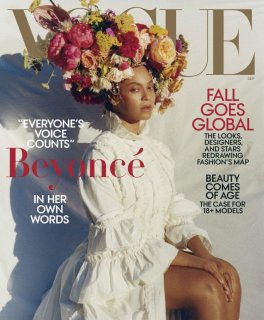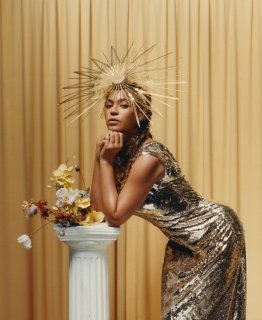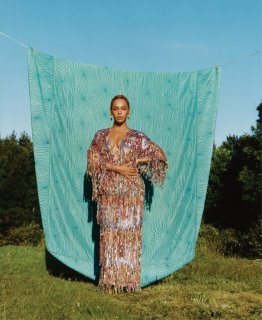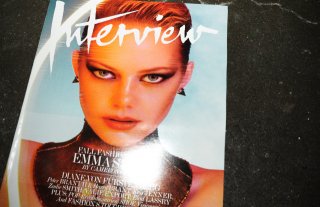What the Hell Has Happened to Vanity Fair?
Column: A new editor is expected to bring changes, not try to fix things that aren't broken.
By Cable Neuhaus :: August 7, 2018
As dramas go, it is minor stuff. But in the itsy-bitsy, hothouse world of magazine glossies, the question everyone seems to be asking this summer is, “What the hell has happened to
Vanity Fair?”
You remember
Vanity Fair, no doubt. It was big not so long ago. The chatterati obsessed over it—its striking covers, its fabulous photo features, its stories (the revelations, the scandals, the crime deconstructions!), even its stylish advertising, which filled its shiny pages. And, of course, its larger-than-life editor, Graydon Carter, who announced his retirement at the end of last year after
a quarter-century at the helm.
Now, half a year since Carter handed over the reins to his surprise-pick successor… silence. And not the kind of silence that issues from respect.
Well, that’s not
entirely accurate. I do hear things, mainly because I’ve spent my life in the media. I listen for the whispers.
This is what media people are whispering:
Vanity Fair is disappearing from the radar. In various forms and contexts, I hear the words “disaster,” “awful,” “irrelevant.”
Unfortunately for the magazine’s owner, Condé Nast, this is occurring at a most inauspicious moment. The publisher is confronting strong economic headwinds on several fronts, to the extent that it has begun the process of selling three of its books. For the time being, it’s said that
VF is safe, but how long before some sort of radical change, or rescue, is deemed necessary?
(As if to kick sand in
VF’s face, a newly emboldened and refinanced
Rolling Stone—now a gorgeous monthly intent on more avidly chronicling social and political topics
—has just come to market; one supposes it’s looking to scoop up readers, including disaffected
VF loyalists. That’s gotta sting.)
The bottom line here is that what only months ago was, under Graydon Carter, a vibrant, decidedly show-offy magazine tapped into a certain sybaritic zeitgeist, now seems starved of the magic dust that had successfully powered it for decades.
There has been a palpable deceleration at
VF, and it’s not clear if that’s what Condé Nast is seeking (hard to imagine), or if the
newly installed editor, Radhika Jones, is expressing her vision of a
VF that’s re-calibrated for these times.
In either case, it’s worrisome. If there’s no course correction in the near future, readers and advertisers are likely to bail.
Just last month, the astute media observer Tony Case, who blogs at tonyofallmedia.com,
said of VF: “With one penny-pinching, jaw-droppingly shortsighted move, the publisher… seems intent on destroying it all.”
Of new EIC Radhika Jones, who was plucked from the
New York Times’ books department, Case remarked that she “can’t carry a tune to save her life. The magazine under Radhika has no idea what it is, or what it wants to be.” And those were some of his more charitable comments.
I’m going to be gentler than Case, probably because over the years
I’ve been asked to fix or help revive a number of magazines and I know how challenging the job can be. Even more so if one is following a living legend.
But let’s be honest,
Vanity Fairdid not need to be fixed. You could argue that, post-Carter, an editor would want to quickly introduce some new, signature elements. (Tina Brown, who ran the book before it went to Carter, reportedly advised Jones to undertake its wholesale reinvention.) Some tweaking would have been understandable, even welcome. If an editor is not going to impose her own sensibility on a magazine, why take the job?
So, more than a handful of issues into the new editor’s management, let’s have a look at Jones’
VF, beginning with its critically important covers.
No way around it: They’ve all been shockingly dull—a tremendous departure from the past. Additionally, the choices have been surprising for how forgettable they’ve been. Jones’ first cover, back in March, featured a barely recognizable headshot of Jennifer Lawrence. Plus lots of almost-too-tiny-to-read type about the issue’s lineup. If the idea was to steer clear of Carter’s notion of a can’t-look-away, newsstand-centric cover, mission accomplished.
Jennifer Lawrence was followed by a succession of thoroughly so-what photographs of Lena Waithe, royals Harry and Meghan (a pick-up shot, no less), Emilia Clarke, Kendrick Lamar, and, for September’s style number, Michelle Williams. Thud, thud, thud, thud, thud.
Somewhere, in a dark restaurant, Graydon Carter must be sipping a glass of red and wondering,
“What the hell?”
His beloved magazine, cover to cover, was for a long time the Cirque du Soleil of monthlies. Today, it’s a lounge act.
Vanity Fair is fairly good, which is an OK standard if you’re talking about a dishwashing machine. It’s not good enough to be one of Condé Nast’s premier titles.
source | foliomag


